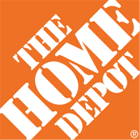The Move: Home Depot got rid of underperforming
assets and redirected resources into what had long been neglected —
its customers.
A recession, particularly one that stems from a massive
housing crisis, couldn’t have come at a worse time for Home Depot. In
2007, around the same time the housing market crashed, CEO Frank Blake
inherited the company along with all the problems former CEO Robert Nardelli
left behind when he resigned under much criticism. When Blake took over, Home
Depot was an overstretched company that had damaged its reputation for customer
service and was losing profits and market share to its No. 1 competitor,
Lowe’s. “Home Depot lost its way completely,”
says Howard Davidowitz, chairman of the retail consulting firm Davidowitz &
Associates. “Nardelli didn’t understand the retail
business and that they were competing against Lowe’s, which was
constantly improving the customer experience at the time.” Like other
retailers, Home Depot must now successfully navigate through the recession. But
unlike many chief execs, Blake’s strategy is about more than hitting
quarterly earnings in the short term — he’s attempting a
radical turnaround to survive the recession and beyond.
One of Blake’s first moves was to shed Home Depot
Supply, a wholesale business that Nardelli created in 2000, which was meant to
tap a new source of revenue via the commercial construction market but never
met profit expectations. Selling Home Depot Supply was controversial because in
2006 the business was increasing its market share, sales had hit $12.1 billion,
and shareholders argued that it was an
important source of value. One of the reasons to keep the business,
says Stephanie Hoff, senior retail analyst at Edward Jones, was that it would “provide
some counter-cyclicality to the business” while the housing market
was soft. But in the end, Home Depot Supply didn’t fit into Blake’s
plans to focus relentlessly on the retail customer. He sold the business to
private equity firms for $8.5 billion — nearly $2 billion less than
originally agreed on because of the tightening credit market. “The
company was doubly distracted with owning Home Depot Supply,” says
David Schick, managing director and retail analyst at Stifel Nicolaus. “Simplification
is key in retail, and Frank has simplified the business.”
Another key priority for Blake is restoring something Home
Depot had lost under Nardelli — a great customer experience. When
Blake took over, Home Depot’s customer satisfaction rating had fallen
eight points in seven years, according to the
href="http://www.theacsi.org/index.php?option=com_content&task=view&id=149&Itemid=157&c=Home+Depot%2C+Inc.%2C+The">University of Michigan’s
American Customer Satisfaction Index. Unlike retailers that have
been quick to cut costs by slashing headcount or employee benefits in the
downturn, Home Depot is investing more in its employees and stores under the
theory that employee satisfaction will trickle down to customers. In 2007, the
company restructured its bonus program, which is driven by store performance,
so that more associates could participate. As of the second quarter, which ended August 3, 75
percent of stores were eligible and payouts exceeded $40 million. And Blake
decentralized decision-making powers so that regional store managers —
not corporate headquarters — now decide which merchandise to stock
based on individual market needs. “There’s no point in
having smart people at the store level if they’re just taking orders
from central,” says Tom Gruca, a University of Iowa marketing
professor who researches customer satisfaction. “Home Depot is going
to attract better employees if they have more decision-making power.”
Under Nardelli, employees stocked basically one inventory assortment for all
stores, even if it meant that the merchandise that sold well in northern urban
stores hardly moved off the shelf in stores in the Sun Belt.
To make up for the business that Home Depot will lose from
contractors while the housing market is depressed, Blake is making an
aggressive push to cater to do-it-yourself shoppers. He has hired about 3,000
electrical and plumbing master tradesmen to bring home improvement know-how
name=Editing> back into stores. This is a particularly smart move both in
the current economic climate and in the long term, says Hoff, because these
experts bring more credibility and expertise into stores. Skilled tradesmen will
in turn train less experienced associates, so that the entire workforce will be
knowledgeable enough to assist shoppers.
So far, Home Depot’s earnings have yet to reflect
much positive impact from Blake’s turnaround plans. In the third quarter, profit
fell 31 percent to $756 million, sales dropped more than 6 percent to $17.8
billion, and the company forecasts end-of-the-year sales could go down as much
as 8 percent. That will mark the third straight year of declining sales. Even
so, the company performed better than expected, and analysts saw a boost in
gross margins as a sign that Blake is on the right track. “[Margins]
were very telling,” says Sarah Henry, a retail analyst for MFC Global
Investment Management. “It signals that they’re managing
inventory well.” Merchandising is under control, employee morale is
reviving, and while traffic in stores isn’t going up, it’s
not doing down either. Although he can’t do anything to change the
current macro environment, Blake is changing just about everything else he can
to make sure Home Depot is ready to bounce back.
